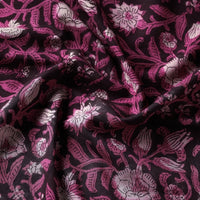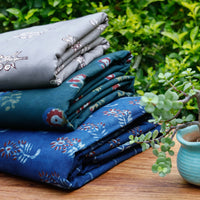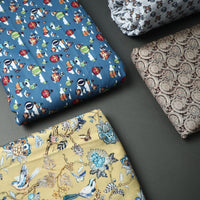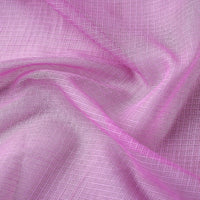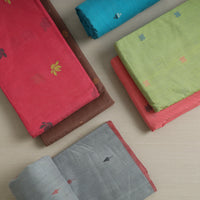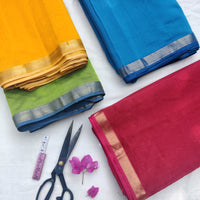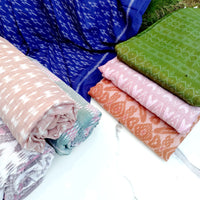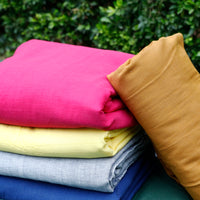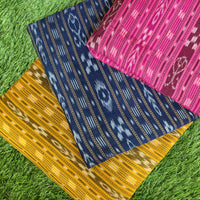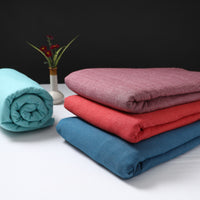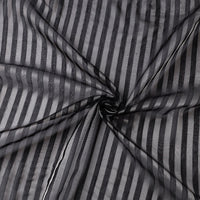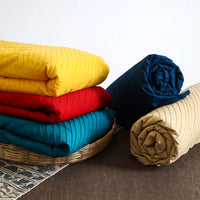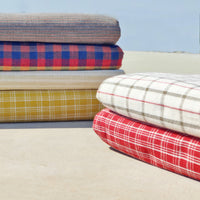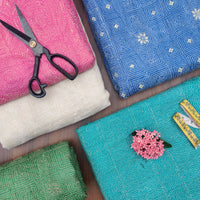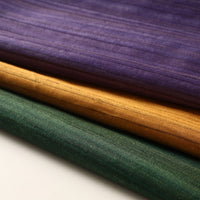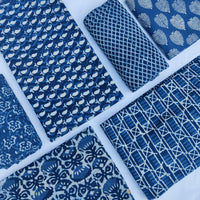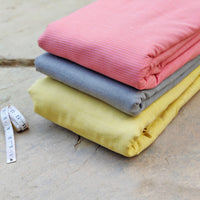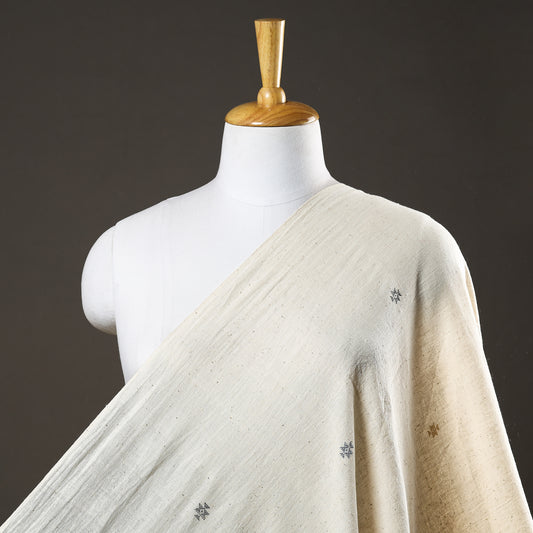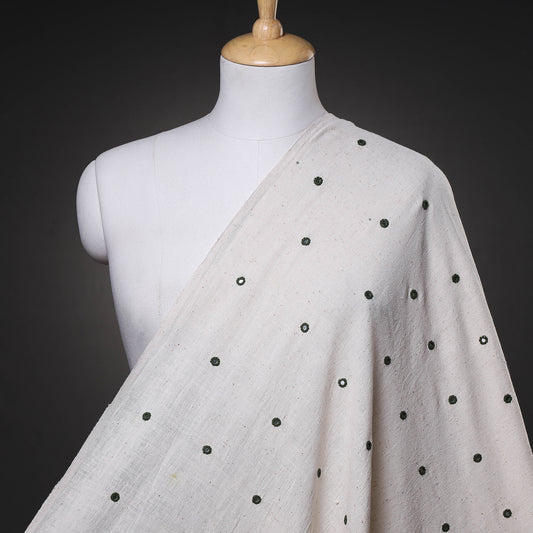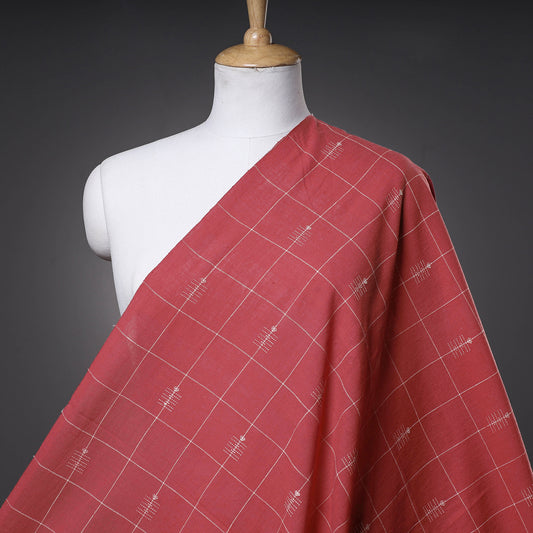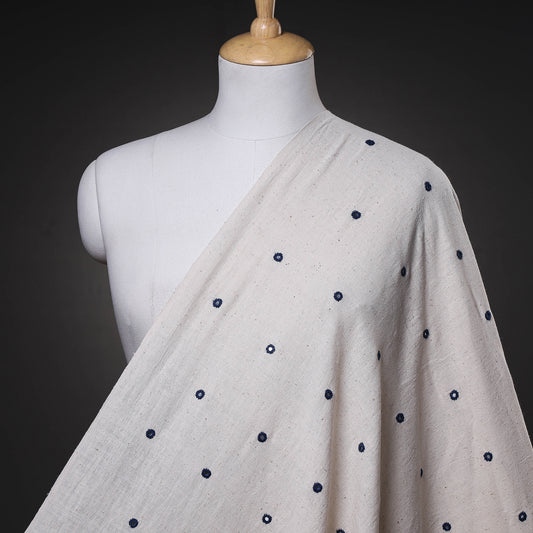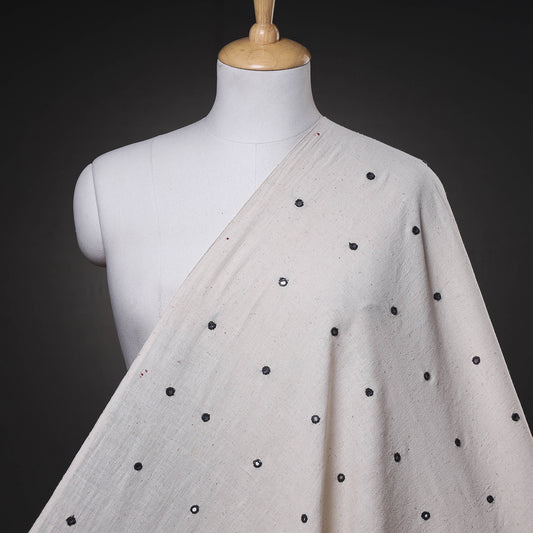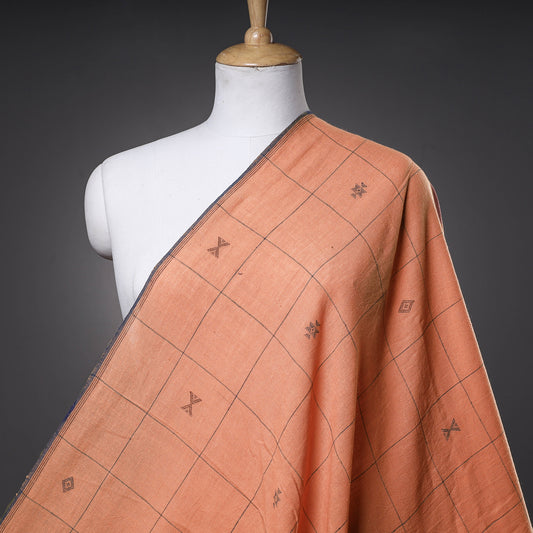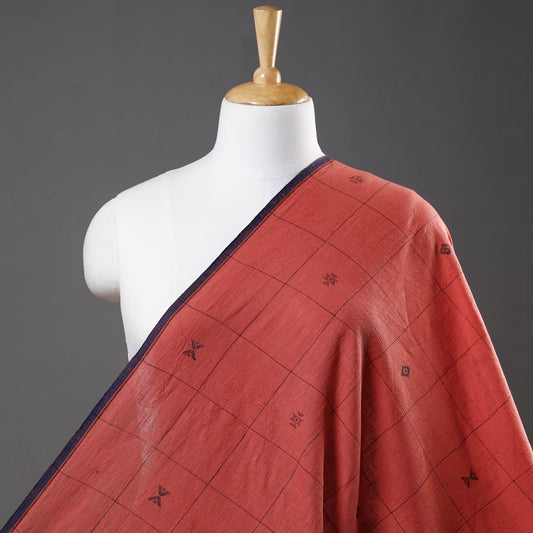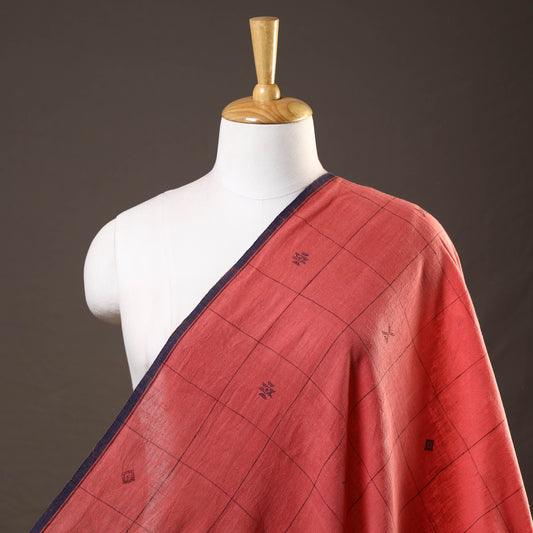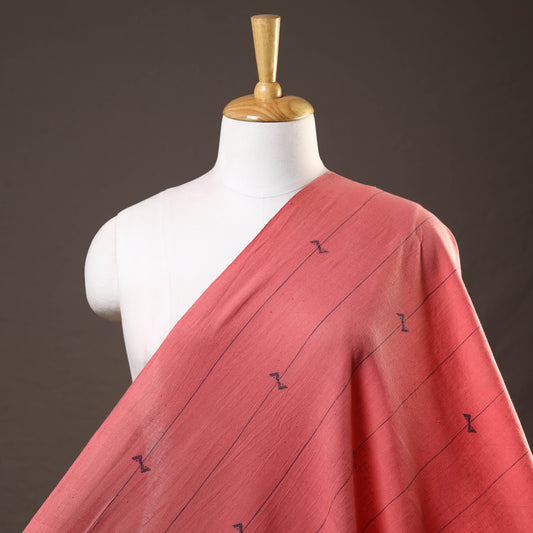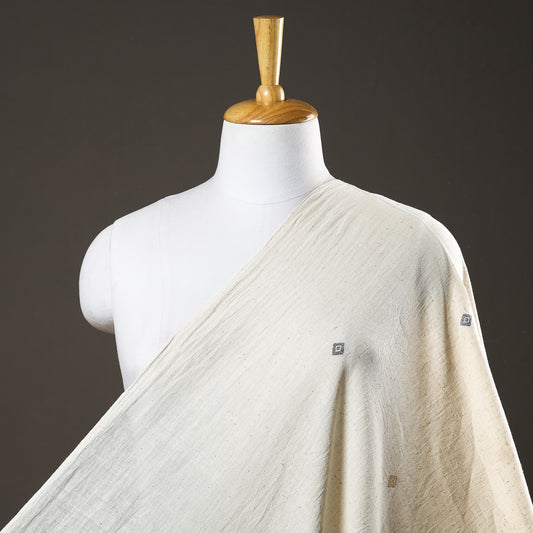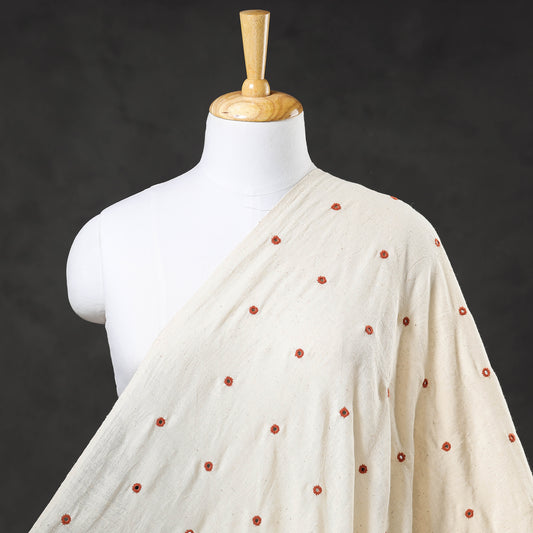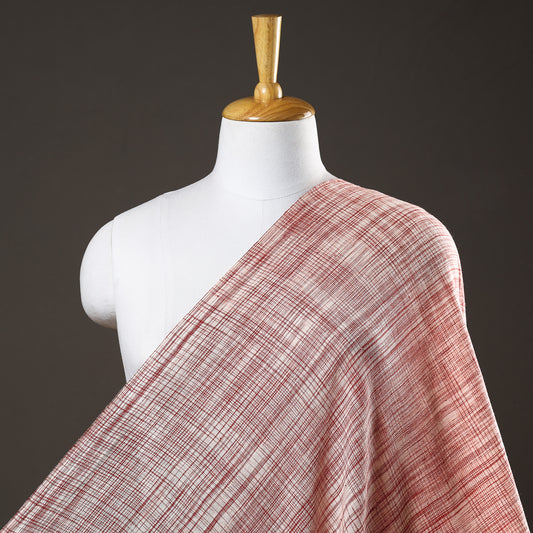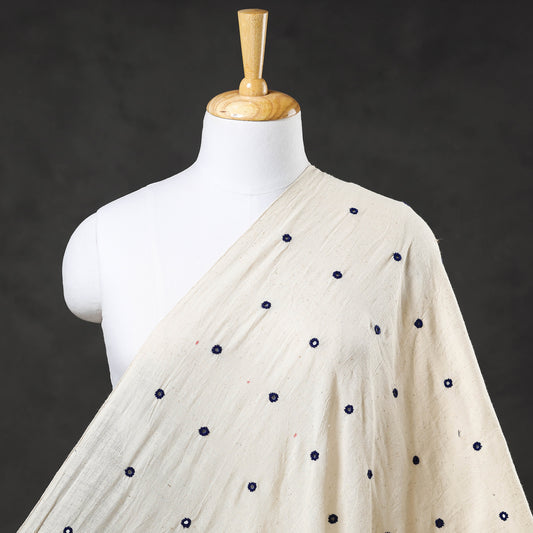Kala Cotton: Weaving Tradition and Sustainability in Kutch
Introduction: The Legacy of Kala Cotton in Sustainable Fashion
Kala cotton is more than just fabric; it’s a symbol of resilience, tradition, and sustainability, deeply rooted in the arid lands of Kutch, Gujarat. This unique cotton variety, native to India, is celebrated for its organic qualities and the way it upholds the principles of sustainable fashion. At iTokri, we proudly bring this heritage-rich fabric to a global audience, allowing you to experience the essence of one of India’s oldest and most authentic cotton varieties.
Historical Significance: The Roots of Kala Cotton
From the Indus Valley to Modern-Day Kutch
Kala cotton, a direct descendant of the ancient cotton varieties cultivated during the Indus Valley Civilization, has been an integral part of India’s textile history for thousands of years. Unlike hybrid cotton, Kala cotton is a genetically pure, indigenous variety, known for its ability to thrive in harsh, drought-prone regions like Kutch. This cotton is rain-fed and requires no synthetic pesticides or fertilizers, making it one of the most eco-friendly textiles available today.
Historically, Kala cotton was the lifeblood of the Kutch textile industry, supporting countless families who depended on its cultivation and weaving. However, with the advent of industrial cotton and synthetic fabrics, the demand for Kala cotton diminished, leading to a significant decline in its cultivation. Yet, thanks to the dedication of a few visionary farmers and artisans, this ancient cotton variety has experienced a revival, becoming a cornerstone of sustainable fashion.
The Craft of Kala Cotton: A Testament to Artisan Skill
Cultivation: A Sustainable Approach
The cultivation of Kala cotton is a labor-intensive process that aligns with nature rather than working against it. Farmers in Kutch practice traditional rain-fed agriculture, relying on the monsoon rains to irrigate their crops. This method not only conserves water but also reduces the carbon footprint associated with cotton production. The use of organic farming techniques ensures that the soil remains fertile and healthy, free from the chemical residues that plague conventional cotton farms.
Weaving: The Art of Craftsmanship
Once harvested, Kala cotton undergoes a meticulous process to become the fabric that has garnered global recognition. The cotton is hand-spun into yarn using traditional spinning wheels, or charkhas, and then woven on handlooms by skilled artisans. This process is deeply intertwined with the cultural identity of the Kutch region, where weaving is not just an occupation but a way of life.
Artisans like Bhimji Bhai from Bhujodi village have dedicated their lives to mastering the craft of weaving Kala cotton. Bhimji’s family has been weaving for generations, and his work is a reflection of the rich heritage and expertise passed down through the years. “Every piece of Kala cotton fabric tells a story,” says Bhimji. “It’s a story of our land, our people, and our history. Weaving this fabric is our way of keeping that story alive.”
The Unique Qualities of Kala Cotton Fabric
Durability and Comfort
Kala cotton fabric is celebrated for its durability and unique texture. Unlike conventional cotton, which is often soft and uniform, Kala cotton has a slightly coarse texture that softens beautifully with each wash. This characteristic is a result of the short-staple fibers that make up the fabric, giving it a natural resilience and strength that is unmatched by other cotton varieties.
This fabric is particularly well-suited for creating garments and home textiles that are not only comfortable but also long-lasting. The hand-spun yarn and handwoven nature of Kala cotton mean that each piece is unique, bearing the individual mark of the artisan who crafted it. Over time, Kala cotton becomes softer and more comfortable, making it a favorite among those who appreciate the beauty of slow fashion.
Eco-Friendly Attributes
One of the most compelling reasons to choose Kala cotton is its environmental impact—or rather, the lack of it. Because it is grown without synthetic chemicals and relies solely on rainwater, Kala cotton has a minimal environmental footprint. Its cultivation supports biodiversity, as the absence of chemical pesticides allows for the natural ecosystem to thrive.
At iTokri, we are committed to promoting sustainable practices, and Kala cotton perfectly aligns with our values. By choosing Kala cotton, you are not only investing in a high-quality fabric but also supporting a farming practice that respects and preserves the natural environment.
The Cultural and Social Impact of Kala Cotton
Empowering Local Communities
The resurgence of Kala cotton has had a profound impact on the communities of Kutch. For many families, the cultivation and weaving of this cotton provide a vital source of income. Organizations like Khamir have been instrumental in supporting these communities, offering training, resources, and market access to ensure that the tradition of Kala cotton weaving continues to thrive.
By purchasing Kala cotton from iTokri, you are directly contributing to the livelihood of these artisans. Every meter of fabric you buy supports a network of farmers, spinners, and weavers who rely on this ancient craft to sustain their families. This is more than just a purchase; it’s a vote for fair trade, ethical production, and cultural preservation.
Preserving a Heritage
Kala cotton is not just a fabric; it’s a symbol of cultural identity. The artisans of Kutch take immense pride in their work, viewing it as a way to honor their ancestors and preserve their heritage. Through their hands, the legacy of Kala cotton lives on, passed down from generation to generation.
At iTokri, we recognize the importance of preserving this heritage. That’s why we are dedicated to offering only the highest quality Kala cotton fabrics, sourced directly from the artisans who create them. Our goal is to ensure that this ancient craft continues to flourish, providing future generations with the opportunity to experience the beauty and significance of Kala cotton.
Why Choose iTokri? A Commitment to Authenticity and Sustainability
Authenticity and Trust
When you buy Kala cotton from iTokri, you can be confident in the authenticity of your purchase. We work directly with artisan communities and reputable organizations to source our fabrics, ensuring that each piece is genuine and ethically produced. Our commitment to transparency means that you know exactly where your fabric comes from and the impact your purchase has on the artisan community.
Cultural Preservation
At iTokri, we are passionate about preserving India’s rich cultural heritage. Our Kala cotton collection is a celebration of this heritage, showcasing the skills and traditions of the Kutch region. By supporting Kala cotton, you are helping to keep these traditions alive, ensuring that they continue to be passed down to future generations.
Sustainability at Core
Sustainability is at the heart of everything we do at iTokri. From our commitment to using recycled materials in our packaging to our support for eco-friendly crafts like Kala cotton, we strive to make a positive impact on the planet. By choosing iTokri, you are making a conscious decision to support a brand that values the environment and works to promote sustainable practices.
Community and Engagement
iTokri is more than just an online store; it’s a community. We are dedicated to sharing the stories of the artisans we work with, providing a platform for their voices to be heard. Through our blog, social media, and events, we engage with our customers and create a space where traditional crafts can be celebrated and appreciated.
Global Reach, Local Touch
While iTokri serves a global audience, we remain deeply rooted in local practices. Our Kala cotton collection is a perfect example of this, offering a product that is both authentically Indian and globally relevant. Whether you are in New York, London, or Mumbai, you can experience the beauty and craftsmanship of Kala cotton, knowing that your purchase supports local artisans.
Conclusion: Join the iTokri Family
Kala cotton is more than just a sustainable fabric; it’s a connection to a rich cultural heritage and a testament to the resilience of nature and tradition. At iTokri, we are proud to offer this extraordinary fabric to a global audience, providing you with the opportunity to embrace a piece of India’s textile legacy.
By choosing Kala cotton from iTokri, you are not only investing in a high-quality product but also supporting the livelihoods of artisans, promoting sustainable practices, and preserving a cultural heritage that dates back thousands of years. We invite you to explore our Kala cotton collection and become part of the iTokri family—a community that values beauty, craftsmanship, and a brighter future for artisans across India.
Frequently Asked Questions (FAQ) about Kala Cotton and iTokri’s Kala Cotton Collection
1. What is Kala Cotton?
Answer:
Kala cotton is an indigenous, organic cotton variety native to the Kutch region of Gujarat, India. Known for its drought-resistant properties, Kala cotton is a genetically pure, rain-fed crop that has been cultivated for thousands of years. Unlike conventional cotton, it is grown without synthetic pesticides or fertilizers, making it an eco-friendly choice. Kala cotton is often hand-spun and handwoven, resulting in a fabric that is both durable and naturally textured.
2. How is Kala Cotton Different from Regular Cotton?
Answer:
Kala cotton differs from regular cotton in several key ways:
-
Cultivation: Kala cotton is a purely organic crop, grown without chemical inputs and relying solely on rainwater, which conserves water and reduces environmental impact.
-
Fiber: It has shorter staple fibers compared to regular cotton, giving it a slightly coarser texture that softens with each wash.
-
Sustainability: Kala cotton's cultivation supports biodiversity and sustainable farming practices, unlike conventional cotton, which often requires intensive water usage and chemical treatments.
3. Why Should I Choose Kala Cotton Fabric?
Answer:
Choosing Kala cotton fabric offers several benefits:
-
Eco-Friendliness: Kala cotton is one of the most sustainable textiles, requiring minimal water and no synthetic chemicals.
-
Durability: The fabric is strong and long-lasting, making it ideal for clothing and home textiles that will stand the test of time.
-
Cultural Heritage: By choosing Kala cotton, you are supporting traditional artisan crafts and helping to preserve a cultural heritage that dates back thousands of years.
-
Comfort: Kala cotton fabric is breathable and becomes softer with every wash, making it increasingly comfortable over time.
4. How is Kala Cotton Fabric Made?
Answer:
Kala cotton fabric undergoes a meticulous, traditional process:
Cultivation: The cotton is grown using organic farming techniques, relying on natural rainfall.
Harvesting: Once mature, the cotton is handpicked by local farmers.
Spinning: The cotton is hand-spun into yarn using traditional spinning wheels (charkhas).
Weaving: Skilled artisans weave the yarn into fabric on handlooms, producing a unique, durable textile that reflects the craft’s cultural significance.
5. What Makes iTokri’s Kala Cotton Collection Unique?
Answer:
iTokri’s Kala cotton collection stands out for several reasons:
-
Authenticity: Sourced directly from artisan communities in Kutch, ensuring that each fabric is genuine and ethically produced.
-
Sustainability: The collection promotes eco-friendly practices, with every purchase supporting sustainable farming and artisan livelihoods.
-
Cultural Preservation: iTokri is committed to preserving India’s rich textile heritage, offering products that celebrate the traditional crafts of the Kutch region.
-
Quality: Each piece in the collection is carefully curated to meet the highest standards of craftsmanship and durability.
6. How Do I Care for Kala Cotton Fabric?
Answer:
Caring for Kala cotton fabric is simple, but a few steps can help maintain its quality:
-
Washing: Hand wash or machine wash on a gentle cycle with cold water and mild detergent. Avoid using bleach or harsh chemicals.
-
Drying: Air dry the fabric in the shade to prevent fading and maintain the fabric’s natural texture. Avoid tumble drying, as it may cause shrinkage.
-
Ironing: If needed, iron the fabric on a low to medium setting while it’s slightly damp to smooth out wrinkles.
7. Is Kala Cotton Suitable for All Seasons?
Answer:
Yes, Kala cotton is a versatile fabric suitable for all seasons:
-
Summer: Its breathable nature keeps you cool in hot weather, making it ideal for summer wear.
-
Winter: While not as insulating as wool, Kala cotton can still provide comfort during cooler months when layered appropriately. Its texture adds a cozy feel to home textiles like throws and cushion covers.
8. How Does Buying Kala Cotton Support Artisan Communities?
Answer:
Purchasing Kala cotton directly benefits the artisan communities of Kutch:
-
Economic Support: Every purchase contributes to the income of farmers, spinners, and weavers, helping them sustain their livelihoods.
-
Cultural Preservation: By choosing Kala cotton, you help keep the tradition of handloom weaving alive, allowing artisans to pass down their skills to future generations.
-
Fair Trade: iTokri ensures that artisans receive fair wages and work in safe, supportive conditions, fostering a sustainable and ethical trade environment.
9. Can Kala Cotton Be Used for Home Textiles?
Answer:
Absolutely! Kala cotton’s durability and natural texture make it an excellent choice for home textiles:
-
Cushion Covers: Add a rustic, earthy touch to your living space with Kala cotton cushion covers that are both stylish and durable.
-
Throws and Blankets: Kala cotton throws provide warmth and comfort, perfect for layering over your furniture or using during cooler evenings.
-
Curtains: The breathable nature of Kala cotton makes it ideal for curtains, allowing light to filter through while maintaining privacy.
10. Where Can I Buy Authentic Kala Cotton Fabric?
Answer:
You can purchase authentic Kala cotton fabric directly from iTokri. We offer a carefully curated selection of Kala cotton products, sourced directly from the artisan communities of Kutch. Each piece is a reflection of traditional craftsmanship and is made with the highest standards of quality and sustainability in mind. By shopping with iTokri, you are not only acquiring a beautiful fabric but also contributing to the preservation of an ancient craft and supporting the livelihoods of artisans.
काला कपास: कच्छ की परंपरा और स्थिरता का प्रतीक
परिचय:
काला कॉटन केवल एक कपड़ा नहीं है; यह गुजरात के कच्छ क्षेत्र की सूखी भूमि में गहराई से जड़ें जमाए हुए स्थिरता, परंपरा और दृढ़ता का प्रतीक है। यह अद्वितीय कॉटन किस्म, जो भारत में उत्पन्न हुई है, अपने जैविक गुणों और स्थायी फैशन के सिद्धांतों को बनाए रखने के लिए जानी जाती है। iTokri इस धरोहर से समृद्ध कपड़े को वैश्विक दर्शकों तक पहुँचाने पर गर्व महसूस करता है, जिससे आप भारत की सबसे पुरानी और प्रामाणिक कॉटन किस्मों के सार का अनुभव कर सकते हैं।
ऐतिहासिक महत्व:
काला कॉटन, जो सिंधु घाटी सभ्यता के दौरान उगाई गई प्राचीन कॉटन किस्मों का प्रत्यक्ष वंशज है, भारत के कपड़ा इतिहास का एक अभिन्न हिस्सा रहा है। यह पूरी तरह से जैविक, स्वदेशी किस्म है, जो कच्छ जैसे कठोर, सूखे क्षेत्रों में पनपने में सक्षम है। इसकी खेती में सिंथेटिक कीटनाशकों या उर्वरकों का उपयोग नहीं किया जाता, जिससे यह आज उपलब्ध सबसे पर्यावरण-अनुकूल वस्त्रों में से एक है। ऐतिहासिक रूप से, काला कॉटन कच्छ के कपड़ा उद्योग की जीवनरेखा थी, जिसने उन अनगिनत परिवारों का समर्थन किया जो इसकी खेती और बुनाई पर निर्भर थे।
iTokri का काला कॉटन संग्रह:
iTokri का काला कॉटन संग्रह प्रामाणिकता, स्थिरता और सांस्कृतिक संरक्षण का प्रतीक है। इस संग्रह से न केवल आप उच्च गुणवत्ता वाले उत्पाद प्राप्त करते हैं, बल्कि कारीगरों के जीवनयापन का समर्थन करते हैं, स्थायी प्रथाओं को बढ़ावा देते हैं और हजारों वर्षों से चली आ रही सांस्कृतिक धरोहर को संरक्षित करने में योगदान करते हैं।
सारांश:
iTokri आपको कच्छ के काला कॉटन की समृद्ध सांस्कृतिक धरोहर से जुड़ने का अवसर प्रदान करता है। इस कपड़े को चुनकर, आप न केवल एक बेहतरीन उत्पाद खरीदते हैं, बल्कि कारीगरों के जीवनयापन, स्थिरता, और एक प्राचीन शिल्प की धरोहर को संरक्षित करने में भी योगदान देते हैं।

















